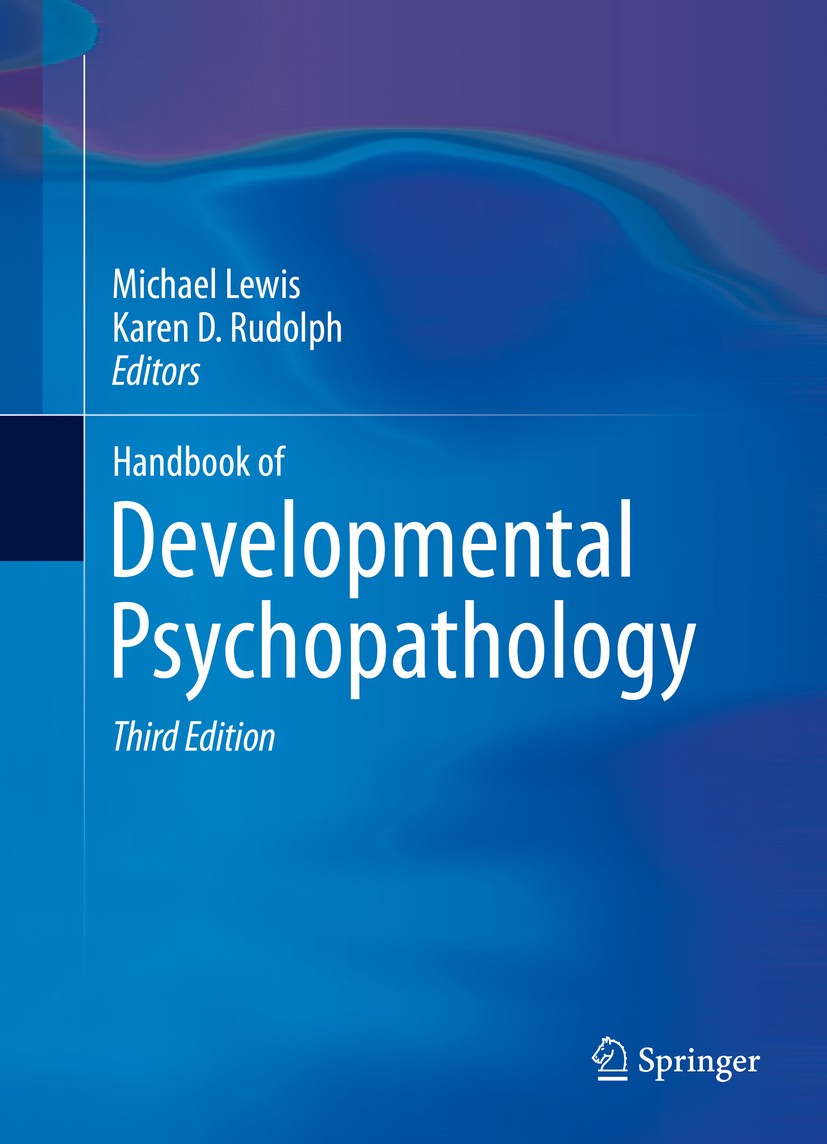| 书目名称 | Handbook of Developmental Psychopathology | | 编辑 | Michael Lewis,Karen D. Rudolph | | 视频video | http://file.papertrans.cn/422/421147/421147.mp4 | | 概述 | Integrates state-of-the-art theory and empirical research across multidisciplinary perspectives.Examines molecular genetics and epigenetics, brain imaging, and early experience in development of biolo | | 图书封面 |  | | 描述 | .When developmental psychologists set forth the theory that the roots of adult psychopathology could be traced to childhood experience and behavior, the idea quickly took hold. Subsequently, as significant research in this area advanced during the past decade, more sophisticated theory, more accurate research methodologies, and improved replication of empirical findings have been the result..The Third Edition of the Handbook of Developmental Psychopathology incorporates these research advances throughout its comprehensive, up-to-date examination of this diverse and maturing field. Integrative state-of-the-art models document the complex interplay of risk and protective factors and other variables contributing to normal and pathological development. New and updated chapters describe current refinements in assessment methods and offer the latest research findings from neuroscience. In addition, the Third Edition provides readers with a detailed review across the spectrum of salient topics, from the effects of early deprivation to the impact of puberty..As the field continues to shift from traditional symptom-based concepts of pathology to a contemporary, dynamic paradigm, the Third E | | 出版日期 | Book 2014Latest edition | | 关键词 | ADHD; ASD; Adolescence; Aggression; Anxiety disorders; Attention deficit hyperactivity disorder; Autism sp | | 版次 | 3 | | doi | https://doi.org/10.1007/978-1-4614-9608-3 | | isbn_softcover | 978-1-4899-7672-7 | | isbn_ebook | 978-1-4614-9608-3 | | copyright | Springer Science+Business Media New York 2014 |
The information of publication is updating

|
|
 |Archiver|手机版|小黑屋|
派博传思国际
( 京公网安备110108008328)
GMT+8, 2025-12-27 05:18
|Archiver|手机版|小黑屋|
派博传思国际
( 京公网安备110108008328)
GMT+8, 2025-12-27 05:18


